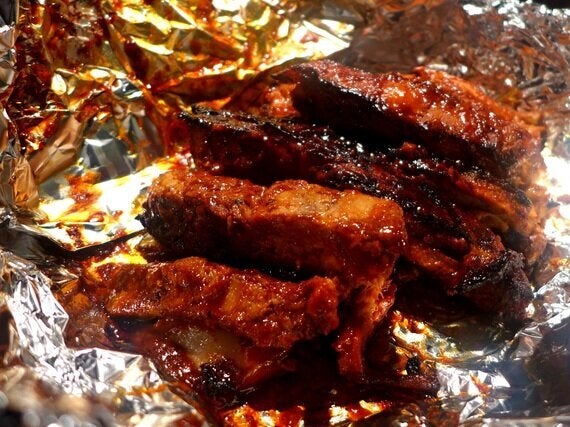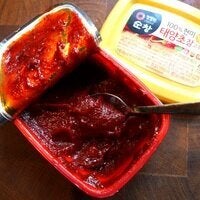
If you haven't come across gochujang before, I urge you to get your sticky mitts on a tub of this fabulous Korean chilli paste. Traditionally gochujang was made by adding powdered red chili peppers and glutinous rice powder to soybean paste and ageing the mixture under the sun. 'Ooh yum' I hear you mutter, but trust me, it tastes amazing.
I suspect the process is rather more industrialised today but the ingredients are the same and it's pretty much a required ingredient for Korean cooking. Having said that, I can't claim this recipe is authentically Korean, but I don't think you'll regret making it. Sticky, sweet and spicy, falling-apart pork ribs. What's not to like? Have a look at the main picture: that cat was loitering with intent.
I suggest you ask your butcher for properly chunky pork ribs with the belly meat still attached. Ask him or her to remove both the rind and the membrane as the latter makes the ribs much less tender to eat.
If you buy them with it still attached, put them meaty side down on a chopping block, slide a sharp knife under the skinny end to loosen the membrane and peel it back. It's easier said than done, which is why I'd advise asking your butcher to do it.
Korean Barbecued Spare Ribs (serves 4-8)
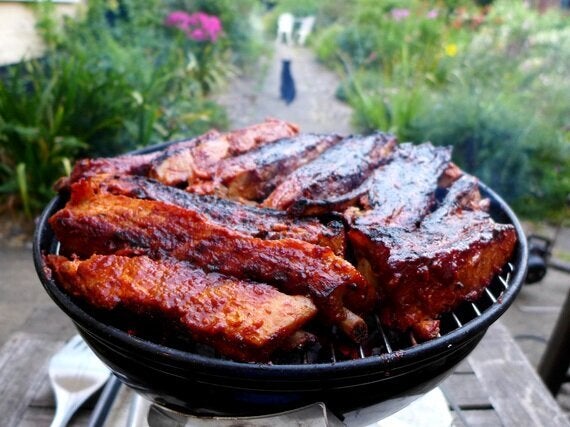
Ingredients:
2.5 kg meaty pork ribs
100g gochujang
60 ml hoisin sauce
3 tbsp tomato puree
60 ml runny honey
60 ml soy sauce
60 ml rice wine or dry sherry
30 ml rice wine vinegar (cider vinegar will do at a pinch)
1 heaped tbsp grated ginger
1 heaped tspn crushed garlic
Method:
Mix all the marinade ingredients together in a bowl. Put the prepared ribs in a roasting tin and slather them all over with two-thirds of the marinade. Cover and refrigerate for at least four hours, preferably overnight.
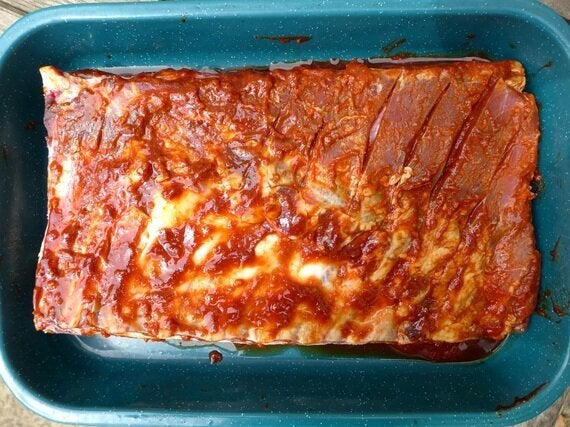
Pre-heat the oven to 150C/300F/Gas Mark 2 and bring the ribs back to room temperature. Cover the roasting tin tightly with foil and cook the ribs for two and a half to three hours, basting a couple of times during the process.
The meat should be so tender that you could pull the bones out (but don't, or they'll be too floppy to handle).
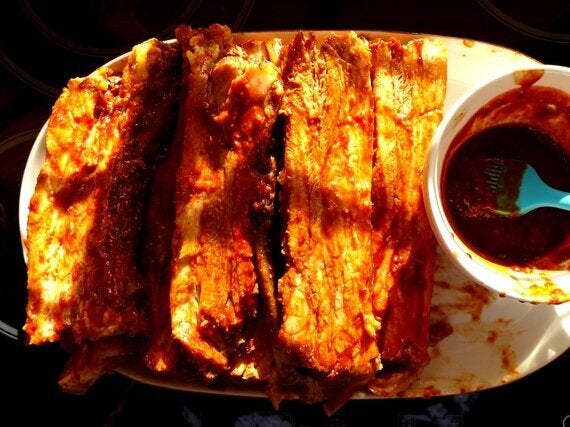
Heat a barbecue or grill until hot, brush the ribs with the remaining marinade and cook until glazed and slightly charred, about 10 minutes. You can cut them into smaller sections to get more charring and sticky goodness and (if you've got a small barbecue) to fit them on the grill.
Serve immediately, with plenty of napkins and/or finger bowls. Although one of our guests managed to eat them neatly with a knife and fork, the rest of us dug in and used our hands. Some of us (okay, me) even managed to get sauce on our chins.
Any leftovers re-heat well in a hot oven, painted with more marinade and wrapped tightly in foil.
